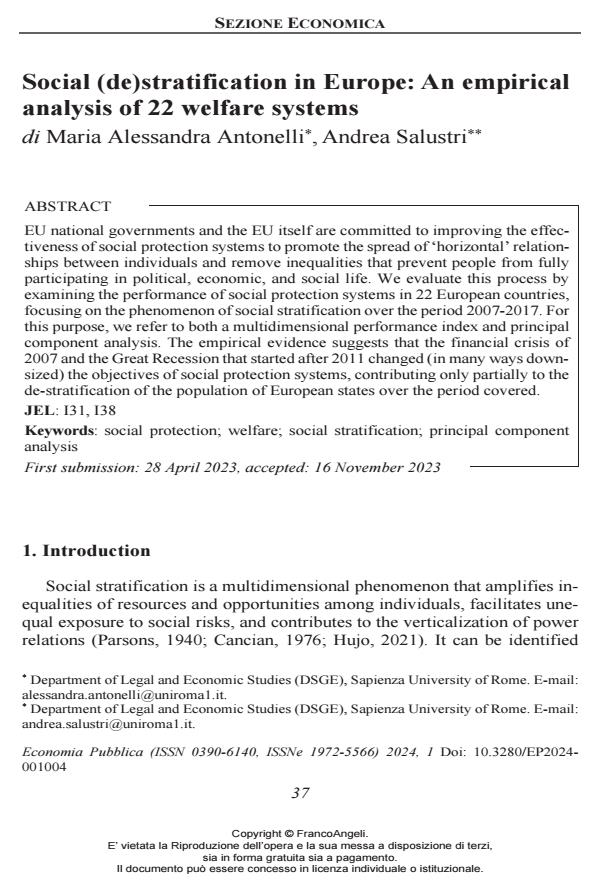Social (de)stratification in Europe: An empirical analysis of 22 welfare systems
Journal title ECONOMIA PUBBLICA
Author/s Maria Alessandra Antonelli, Andrea Salustri
Publishing Year 2024 Issue 2024/1
Language English Pages 28 P. 37-64 File size 433 KB
DOI 10.3280/EP2024-001004
DOI is like a bar code for intellectual property: to have more infomation
click here
Below, you can see the article first page
If you want to buy this article in PDF format, you can do it, following the instructions to buy download credits

FrancoAngeli is member of Publishers International Linking Association, Inc (PILA), a not-for-profit association which run the CrossRef service enabling links to and from online scholarly content.
EU national governments and the EU itself are committed to improving the ef-fectiveness of social protection systems to promote the spread of ‘horizontal’ relationships between individuals and remove inequalities that prevent people from fully participating in political, economic, and social life. We evaluate this process by examining the performance of social protection systems in 22 Euro-pean countries, focusing on the phenomenon of social stratification over the pe-riod 2007-2017. For this purpose, we refer to both a multidimensional perfor-mance index and principal component analysis. The empirical evidence suggests that the financial crisis of 2007 and the Great Recession that started after 2011 changed (in many ways downsized) the objectives of social protection systems, contributing only partially to the de-stratification of the population of European states over the period covered.
Keywords: social protection; welfare; social stratification; principal component analysis
Jel codes: I31, I38
Maria Alessandra Antonelli, Andrea Salustri, Social (de)stratification in Europe: An empirical analysis of 22 welfare systems in "ECONOMIA PUBBLICA " 1/2024, pp 37-64, DOI: 10.3280/EP2024-001004